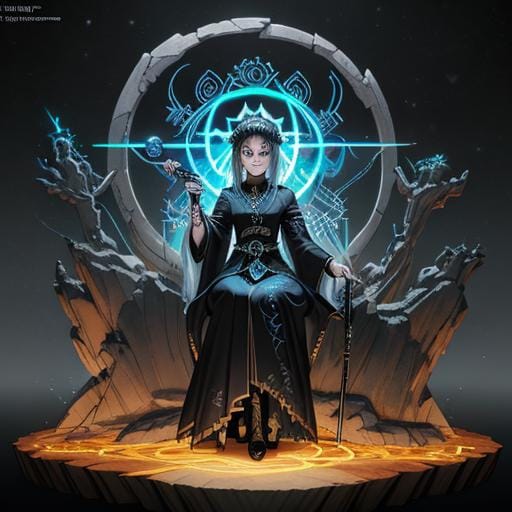Hecate

Hecate, the Celtic goddess, is a powerful and mysterious deity who has been revered and worshipped by many cultures throughout history. Her name is derived from the Greek word "hekatos," meaning "worker from afar," and she is often associated with magic, witchcraft, and the underworld. While her origins are rooted in ancient Greek mythology, Hecate's influence has spread far beyond the borders of Greece and she has become an important figure in Celtic mythology and spirituality. The History of Hecate In Greek mythology, Hecate was the daughter of the Titans Perses and Asteria. She was often depicted as a triple goddess, with three faces or three bodies, representing her role as the goddess of the crossroads, magic, and the underworld. She was also known as the goddess of the moon, often depicted holding two torches to guide souls through the darkness of the underworld. Hecate's presence can be traced back to the 5th century BCE, where she was worshipped as a protector of women, especially during childbirth. Her role as a guardian of women continued throughout the centuries, and she was often invoked for protection and guidance during times of transition and change. In Celtic mythology, Hecate was known as Cailleach, which means "veiled one" or "hag." She was seen as a crone goddess, associated with the cycles of life, death, and rebirth. She was also believed to be a shape-shifter, able to transform into different animals and guide the souls of the dead to the afterlife. Spiritual Significance of Hecate Hecate is a complex and multifaceted goddess, and her spiritual significance varies depending on the culture and time period. In ancient Greece, she was often associated with the darker aspects of magic and witchcraft, and was seen as a powerful protector of women and children. She was also believed to have the ability to grant wishes and bring good luck. In Celtic spirituality, Hecate is seen as a wise and powerful crone goddess, associated with the cycles of life, death, and rebirth. She is often invoked during Samhain, the Celtic festival of the dead, to honor and communicate with ancestors and departed loved ones. She is also seen as a guide and protector during times of transition and change, helping individuals navigate the unknown and find their inner strength and wisdom. Hecate's role as a goddess of the crossroads is also significant in Celtic spirituality. In ancient times, crossroads were seen as liminal spaces, where the boundaries between the physical and spiritual worlds were blurred. Hecate was believed to reside at these crossroads, and offerings were often left for her to seek her guidance and protection. Hecate's influence has also spread to modern paganism and Wiccan traditions, where she is seen as a powerful goddess of magic and witchcraft. She is often invoked during rituals and spells, and her symbols, such as the torches and the triple moon, are used in magical workings. Honoring Hecate Hecate continues to be honored and worshipped by many today, and there are various ways to pay tribute to this powerful goddess. Offerings of food, drink, and herbs can be left at crossroads or at altars dedicated to Hecate. Lighting candles or incense in her honor is also a common practice. Some may choose to work with Hecate in their spiritual practices, seeking her guidance and protection during times of transition and change. Others may incorporate her symbols and imagery into their rituals and spells, harnessing her power and energy for their magical workings. In conclusion, Hecate, the Celtic goddess, has a rich history and spiritual significance that continues to captivate and inspire people today. Whether seen as a protector, guide, or source of magical power, her presence is felt in many cultures and spiritual traditions. As we honor and pay tribute to this ancient goddess, we are reminded of the power and wisdom that resides within us all.
